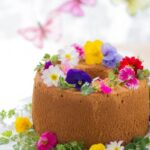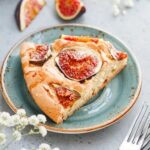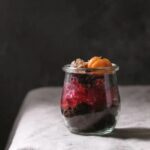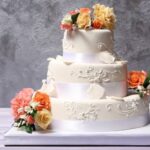Are you looking to take your cake decorating skills to the next level? One way to achieve professional-looking results is by using an airbrush for cake decorating. In this article, we will guide you through the process of how to use a airbrush for cake decorating, from choosing the right equipment to mastering techniques and troubleshooting common issues.
Airbrushing has become a popular technique in the world of cake decorating, allowing for precise and stunning designs that are difficult to achieve with traditional methods. Whether you’re a beginner or an experienced baker, learning how to use an airbrush can open up endless creative possibilities for your cake designs.
In the following sections, we will cover everything you need to know about airbrushing for cake decorating. From selecting the best airbrush for your needs to setting up and maintaining your equipment, as well as tips and techniques for creating beautiful decorations, this comprehensive guide will help you become proficient in using an airbrush for cake decorating.
Choosing the Right Airbrush for Cake Decorating
When it comes to cake decorating, using an airbrush can take your creations to the next level. But before you can start creating stunning designs on your cakes, you need to choose the right airbrush for the job. With so many options available on the market, it’s essential to consider a few key factors when selecting an airbrush for cake decorating.
First and foremost, consider the type of compressor that will work best for your needs. The two main types are diaphragm compressors and piston compressors. Diaphragm compressors are quieter and more suitable for small-scale projects, while piston compressors are better for larger-scale projects and offer higher pressure levels.
Next, think about the feed system of the airbrush. There are three main types: gravity feed, siphon feed, and side-feed. Gravity feed allows for more precise control and is ideal for detailed work on cakes. Siphon feed airbrushes are better suited for covering larger areas quickly, while side-feed airbrushes provide a good balance between the two.
It’s also important to consider the nozzle size of the airbrush. Nozzle sizes typically range from 0.2mm to 0.5mm, with smaller nozzles being better for fine detail work and larger nozzles being more suitable for covering larger areas.
| Compressor Type | Recommended Use |
|---|---|
| Diaphragm Compressors | Small-scale projects, quieter operation |
| Piston Compressors | Larger-scale projects, higher pressure levels |
By considering these factors and doing thorough research on different airbrush models, you can choose the right airbrush for your cake decorating needs that will help you achieve professional-looking results in no time.
Setting Up Your Airbrush Equipment
When it comes to cake decorating, using an airbrush can add a professional touch to your creations. Before you start using the airbrush for cake decorating, it’s important to set up your equipment properly. Here’s how to get started:
1. Assemble your airbrush: Start by attaching the air hose to the bottom of the airbrush and securing it with a wrench. Make sure the connection is tight to prevent any leaking.
2. Prepare your workspace: Choose a well-ventilated area for airbrushing and cover nearby surfaces with plastic or newspaper to protect them from overspray.
3. Fill the airbrush reservoir: Depending on the type of airbrush you have, fill the reservoir with edible food coloring or airbrush color. Be sure to thin out the color with a suitable diluting agent if necessary.
4. Test spray: Before using the airbrush on your cake, test-spray on a piece of paper or cardboard to ensure that the color is flowing smoothly and at the right consistency.
Now that you’ve set up your airbrush equipment, you’re ready to start using it for cake decorating.
Once you have your equipment assembled and ready, you can start practicing using an airbrush for cake decorating. By following these steps carefully, you’ll be able to make use of this versatile tool in creating stunning designs on your cakes.
Using the Airbrush to Create Basic Cake Decorations
Once you have set up your airbrush equipment and chosen the right airbrush for cake decorating, it’s time to start using this tool to create basic cake decorations. One of the most common uses for an airbrush in cake decorating is to apply a smooth and even coat of color to the surface of a cake. This could be a simple solid color or a gradient effect, depending on your design.
To use an airbrush for basic cake decorations, start by filling the airbrush with the desired color of food-safe airbrush paint. Hold the airbrush about 6-8 inches away from the surface of the cake and begin spraying in even, overlapping strokes. Keep a steady hand and move at a consistent speed to ensure an even application of color. Practice on a piece of paper or cardboard before applying it to the actual cake.
Achieving a smooth finish when using an airbrush for basic cake decorations may take some practice, but with time and experience, you will be able to create beautiful, professional-looking designs on your cakes. Whether it’s adding a pop of color or creating an ombre effect, mastering this skill will take your cake decorating to the next level.
| Airbrush Cake Decoration Tips | Data |
|---|---|
| Distance from surface | About 6-8 inches away from the cake |
| Testing first | Practice on paper or cardboard before applying to the actual cake |
Achieving Different Effects With the Airbrush
Achieving different effects with an airbrush can take your cake decorating to the next level. With the right techniques and practice, you can create stunning designs and textures on your cakes that will impress anyone who sees them.
Creating Ombre Effects
One popular technique for using an airbrush in cake decorating is creating ombre effects. This involves blending two or more colors together to create a gradient effect on the cake. To achieve this, start by layering the lightest color at the top of the cake and gradually adding darker shades as you work your way down. The airbrush allows for a smooth transition between colors, resulting in a beautiful ombre effect.
Adding Texture and Depth
Another way to use an airbrush for cake decorating is to add texture and depth to your designs. By adjusting your airbrush’s pressure and distance from the cake, you can create shading and highlights that give your decorations a three-dimensional appearance. Whether you want to make flowers look more realistic or add dimension to a themed cake, the airbrush is a versatile tool for achieving this effect.
Stencil Designs
Using stencils with an airbrush is a great way to add intricate designs to your cakes. Simply place the stencil on the cake’s surface and spray your desired color over it with the airbrush. This allows for precise patterns and detailed artwork that would be difficult to achieve by hand. Stenciling with an airbrush opens up endless possibilities for customizing your cakes with various shapes, images, and motifs.
Mastering these different effects with an airbrush will elevate your cake decorating skills and allow you to create unique and professional-looking designs that are sure to delight any recipient. Experimenting with different techniques and practicing regularly will help you become more comfortable with using an airbrush for cake decorating, opening up even more possibilities for creativity in your baking projects.
Troubleshooting Common Issues With Using an Airbrush
Uneven Spray or Splattering
One common issue when using an airbrush for cake decorating is experiencing uneven spray or splattering. This can be caused by a few different factors, such as clogging in the airbrush tip or inconsistent air pressure. To troubleshoot this issue, start by cleaning the airbrush thoroughly to remove any buildup that may be causing clogs. Additionally, make sure that the air pressure is consistent and adjusted to the appropriate level for the type of decoration you are trying to create.
Color Bleeding
Another issue that may arise when using an airbrush for cake decorating is color bleeding, where the colors blend together more than desired. To prevent this, ensure that each color layer is fully dry before applying the next one. You can also try using less liquid in your airbrush color mixture to reduce the risk of colors bleeding into each other.
Spattering or Fading of Colors
If you are experiencing spattering or fading of colors when using an airbrush for cake decorating, it may be due to inconsistent airflow or dried out paint at the tip of the airbrush. To solve this issue, make sure that your paint consistency is correct and that there are no blockages in the nozzle. Adjusting the airflow and practicing proper distance and technique can also help achieve smooth and even color application.
By troubleshooting these common issues with using an airbrush for cake decorating, you can achieve professional-quality results and create stunning designs on your cakes. With practice and patience, you’ll be able to master the art of airbrush cake decorating and impress your friends and family with beautiful creations.
Tips and Techniques for Mastering Airbrush Cake Decorating
When it comes to mastering airbrush cake decorating, there are a few tips and techniques that can help you achieve professional-looking results. With the right skills and knowledge, you can create stunning designs and intricate details on your cakes using an airbrush. Here are some tips and techniques to help you take your airbrush cake decorating skills to the next level:
Tips for Mastering Airbrush Cake Decorating
- Practice Makes Perfect: Like any skill, mastering airbrush cake decorating takes practice. Set aside time to experiment with different pressures, distances, and angles to see how they affect the result.
- Start with Stencils: Using stencils is a great way to create precise designs without having to freehand everything. Start by practicing with stencils to get a feel for how the airbrush works and how different stencil designs can be combined.
- Layering Colors: Experiment with layering different colors to create depth and dimension in your designs. By layering colors, you can achieve a more realistic and dynamic look on your cakes.
Techniques for Mastering Airbrush Cake Decorating
- Control Your Airbrush: Learning how to control the airflow, pressure, and distance of the airbrush from the cake is crucial for achieving detailed designs. Practice controlling these variables to create precise lines and gradients.
- Work in Sections: When creating complex designs, it’s helpful to work in sections rather than trying to cover the entire cake at once. This allows you to focus on one area at a time and maintain consistency throughout the design.
- Use Masking Techniques: Masking certain areas of the cake with paper or plastic shields can help you create clean lines and prevent overspray when working on specific parts of the design.
By following these tips and techniques, you can improve your airbrush cake decorating skills and create stunning edible works of art. With patience, practice, and creativity, you can master the art of using an airbrush for cake decorating.
Cleaning and Maintaining Your Airbrush for Longevity and Quality Results
In conclusion, mastering the art of using an airbrush for cake decorating can elevate your creations to a whole new level. From creating basic decorations to achieving different effects, an airbrush can add an impressive touch to your cakes. However, it’s essential to keep your airbrush clean and well-maintained for longevity and quality results.
Proper maintenance of your airbrush is crucial to ensure that it continues to function effectively and produce the desired results. Regular cleaning after each use is essential to prevent clogs and maintain the integrity of the equipment. Additionally, proper storage and handling of your airbrush will also contribute to its longevity and performance.
By following the tips and techniques for cleaning and maintaining your airbrush, you can ensure that it remains in top condition for years to come. Remember to refer to the manufacturer’s instructions for specific cleaning procedures and recommended maintenance steps. With proper care, your airbrush will continue to be a valuable tool in creating stunning cake decorations.
In summary, learning how to use an airbrush for cake decorating opens up a world of creative possibilities. It’s not just about choosing the right equipment or mastering the technique; it’s also about taking care of your tools for long-lasting quality results. With dedication and practice, you can become proficient in using an airbrush for cake decorating and create beautifully decorated cakes that will impress any audience.
Frequently Asked Questions
How Do You Airbrush a Cake for Beginners?
Airbrushing a cake for beginners involves first preparing the airbrush and food colors, then practicing on a paper or surface before moving on to the actual cake. Start with lighter colors and gradually add darker shades for a smooth finish.
Can You Use a Regular Airbrush for Cake Decorating?
Yes, you can use a regular airbrush for cake decorating as long as it is clean and dedicated solely to food use. Make sure to thoroughly clean the airbrush after each use and only use food-safe colors.
Can I Use Regular Food Coloring in My Airbrush?
Regular food coloring can be used in an airbrush as long as it is thinned out with some form of alcohol or a special thinning agent made specifically for food coloring. It’s important to follow the instructions for dilution to avoid clogging the airbrush or creating undesirable textures on the cake.

Welcome to my blog about home and family. This blog is a place where I will share my thoughts, ideas, and experiences related to these important topics. I am a stay-at-home mom with two young children. I hope you enjoy reading it! and may find some helpful tips and ideas that will make your home and family life even better!





